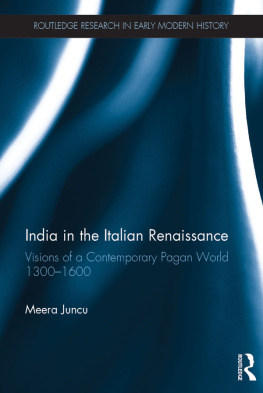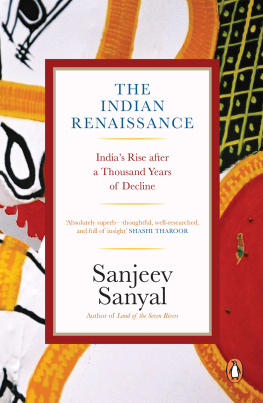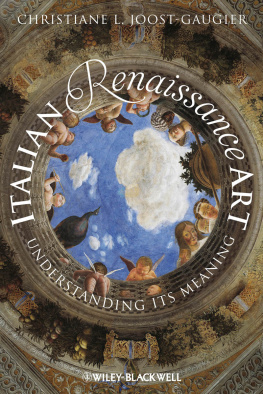Originally published in English in 1944 by Oxford University Press
Published 2016 by Transaction Publishers
Published 2017 by Routledge
2 Park Square, Milton Park, Abingdon, Oxon OX14 4RN
711 Third Avenue, New York, NY 10017,USA
Routledge is an imprint of the Taylor & Francis Group, an informa business
New material this edition copyright 2016 by Taylor & Francis.
Copyright 1932 by Stuggart: Ferdinand Enke Verlag.
All rights reserved. No part of this book may be reprinted or reproduced or utilised in any form or by any electronic, mechanical, or other means, now known or hereafter invented, including photocopying and recording, or in any information storage or retrieval system, without permission in writing from the publishers.
Notice:
Product or corporate names may be trademarks or registered trademarks, and are used only for identification and explanation without intent to infringe.
Library of Congress Catalog Number: 2015004404
Library of Congress Cataloging-in-Publication Data
Martin, Alfred Wilhelm Otto von, 1882-1979.
[Soziologie der Renaissance. English]
Sociology of the renaissance / Alfred von Martin; new introduction
by Gertrud Lenzer.
pages cm
Includes bibliographical references and index.
ISBN 978-1-4128-5686-7
1. Social history--Medieval, 500-1500. 2. Renaissance. I. Martin, Alfred
Wilhelm Otto von, 1882-1979, Soziologie der Renaissance. II. Martin,
Alfred Wilhelm Otto von, 1882-1979. Soziologie der Renaissance.
English. III. Title.
HN 11.M3 2015
306.09'02--dc23
2015004404
ISBN 13: 978-1-4128-5686-7 (pbk)
Introduction to the Transaction Edition by Gertrud Lenzer
Alfred von Martins Sociology of the Renaissance has a unique history as a classic and pioneering document in Renaissance and Renaissance humanism scholarship.
His Life
Alfred Wilhelm Otto von Martin was born in Berlin on July 24, 1882, and died in Munich on June 11, 1979. He grew up as the eldest son of Friedrich von Martin on the estate of Rothenburg near Grlitz in East Prussia. His father, a member of the Prussian landed Junker nobility, was the well-to-do co-owner of saltpeter mills in Valdivia in Chile and Hamburg. Von Martin was first educated on the family estate by a private tutor, Dr. A. Schlemm, an expert in classical languages and antiquity, who played a vital role in von Martins future interests in cultural history and the Renaissance. He transferred to the humanistically-based high school in Grlitz for a few years before taking the final examinations. Von Martin confirmed his indebtedness to Dr. Schlemm when he later dedicated to him his Coluccio Salutati and his Humanist Ideal of Life: A Chapter from the Genesis of the Renaissance (1916)the habilitation thesis in medieval and modern history which provided him with the venia legendi , the highest scholarly qualification to teach at the university. He wrote: In grateful memory of the times of the first introduction to the Humaniora ; that is to say the study of all areas of the humanities, including classical studies and ancient history.
After the completion of secondary school, von Martin studied jurisprudence and received the JD degree ( juris doctor) at the University of Breslau in 1906 on the topic, On the Question of the Beginning of the Period of the German Reichstag and the Prussian State Government. This dissertation on constitutional law and government was going to be of importance in his later research on Coluccio Salutati and his theories of the state and law. Instead of pursuing a career in law, however, von Martin turned to studies in the field of historya decisive change of direction from his background in the business of his father. He once
After Hitlers seizure of power in 1933 and because of his opposition to National Socialism which no longer guaranteed freedom of speech, von Martin asked for a leave from his position and lived as a private scholar in Munich. During this period, he published Nietzsche and Burckhardt in 1941, They were republished after 1945.
After the end of World War II, von Martin taught in Munich at the Technische Hochschule, and from 1948 to 1958, he was asked by the University of Munich to teach and serve as commissary substitute until the new chair for sociology was appointed in 1958. He gave lectures in cultural and intellectual history as well as seminars on the history of political thought of the eighteenth and nineteenth centuries and on sociology. When he retired at the age of seventy-sevenas M. Rainer Lepsius affirmedhe was of extraordinary physical freshness and spiritual animation.
The Sociology of the Renaissance
The first German edition of Sociology of the Renaissance, published in 1932, in the same year as Curtiuss German Spirit in Danger , was subtitled Physiognomy and Rhythm of a Bourgeois Culture .
Twelve years later, having emigrated in 1933 to England and a position at the London School of Economics, in his capacity as the editor of the International Library of Sociology and Social Reconstruction , Mannheim had von Martins book translated and published in 1944 as Sociology of the Renaissance , omitting the subtitle. This is how the book became known among English-speaking scholars. The book was published again in English by Harper & Row in 1963 with an introduction by the Renaissance scholar Wallace K. Ferguson. There were also translations into Spanish, Dutch and Japanese shortly after World War II, but no republication in German since the third edition of 1974, when von Martin was still alive at the age of ninety-two.
The Renaissance and the Spirit of Capitalism
According to von Martin, the fundamental query of his essay, as he characterized his work, is to determine the spirit of the Renaissance and with it the spirit of early capitalism as they arose in Florence. For his analysis of the Renaissance, von Martin employed the method of the ideal type proposed and employed by Max Weberhimself a consummate historianin his classic study The Protestant Ethic and the Spirit of Capitalism. In 1932, this meant since the middle 1900s and his dissertation on Coluccio Salutati.
With regard to Jacob Burckhardt and his classic treatise of the Civilization of the Renaissance in Italy, precisely the issues von Martin raises in Sociology of the Renaissance.
The sweep of von Martins book on the first modern bourgeois epoch (xxxiv.) spans the period of the late Middle Ages to the dynamic rise of the haute bourgeoisie in the early Renaissance, to its zenith in the full Renaissance and eventually to its decline, which brought about a new stasis in the aristocratization of the great bourgeoisie as well as the rise of despotism in the fourteenth and fifteenth centuries. who takes the history of Florence together with that of Rome, which is, von Martin comments, as characteristic of the Renaissance. (xxxii.)













